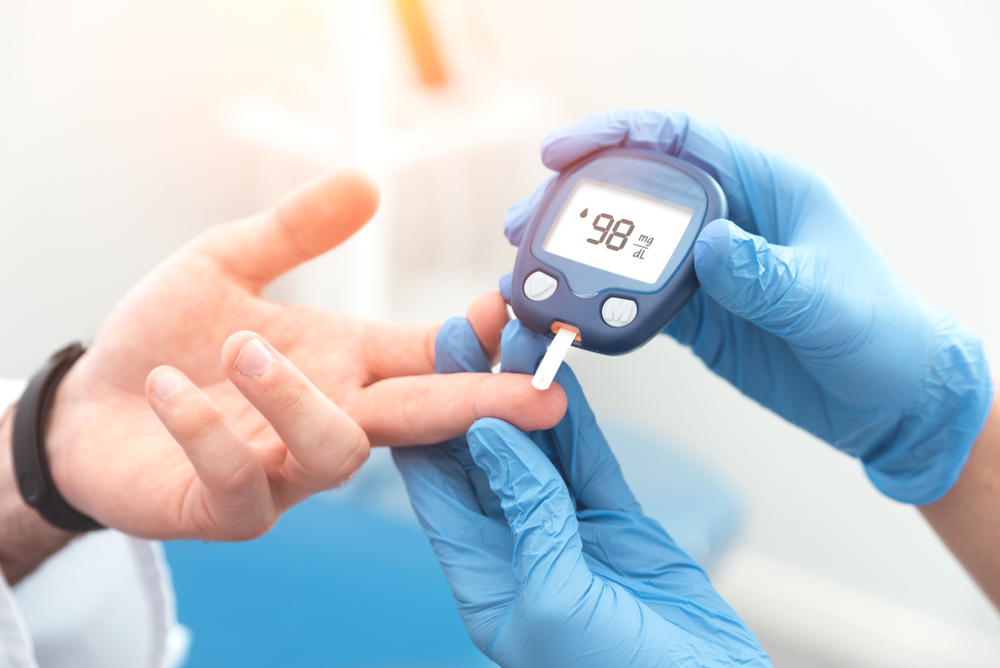37.3 million people have diabetes in the United States, but more shockingly, 96 million – more than one in three – have prediabetes. More than 8 in 10 adults with prediabetes don’t even know they have it, according to the CDC. Risk of early death for adults with diabetes is 60% higher than for those without. People with diabetes are at higher risk of blindness, kidney failure, heart disease, stroke, and loss of limbs, per the CDC. 2 in 5 Americans are expected to develop type 2 diabetes in their lifetime.
Type 1 diabetes means your body doesn’t make enough insulin. It can develop at any age and there is no known way to prevent it. Fortunately, type 1 diabetes accounts for only five to ten percent of cases. Type 2 diabetes is much more common, representing the other 90-95% of diabetes according to the CDC. According to the CDC, “Most cases can be prevented.” Risk factors for Type 2 diabetes can include being overweight, family history, being physically inactive, and being older than 45. The CDC recommends working with a health professional, eating healthy, and staying active to manage diabetes.
Prediabetes means your blood sugar levels are higher than normal but are not yet high enough to be considered diabetes. Prediabetes increases risk of Type 2 diabetes, heart disease, and stroke. To find out if you have prediabetes, you should see your doctor and get your blood sugar tested. The CDC also provides this prediabetes risk test, which can be taken online. If you have prediabetes, the CDC recommends you lose weight by eating healthy and being more active. It can cut your risk of getting type 2 diabetes in half.
The CDC notes that lifestyle change programs can help you make healthy changes and make them stick. You do not need to be Michael Phelps or Erin Jackson to reduce your diabetes risk. The CDC recommends brisk walking or a similar activity at least 30 minutes a day five days a week. The CDC sponsors a number of programs for diabetes prevention, a surprising number of which might be in your own community. Be sure to check the National Registry of Recognized Diabetes Prevention Programs. Furthermore, weight loss of just 5 to 7% through reducing calorie intake and increasing activity can reduce the chance of type 2 diabetes by 58%. Lifestyle change programs, part of the CDC-led National Diabetes Prevention Program, passed by Congress in 2009 as part of the Diabetes Prevention Act, provides you with a trained lifestyle coach, group support, and a full year of in-person or online meetings. You can learn more about the program directly from the CDC or you might find or ask your healthcare provider about these options.
Symptoms of diabetes include the following, according to the Mayo Clinic: Excessive thirst, frequent urination, extreme hunger, fatigue, irritability, blurred vision, slow-healing ores, and frequent infections. You should see a doctor if you suspect you or a family member may have diabetes. Work with your doctor to help you to get blood sugar levels to stabilize.
Treatments for diabetes might include medication and insulin therapy, according to the Mayo Clinic. You will also engage in regular blood sugar monitoring, and will have to monitor sugar intake. Monitoring is usually done via glucose meters, which are small devices that can be used at home. Drug treatments that assist with lowering insulin levels may be required. These may work to lower glucose production in the liver, or help you to secret more insulin, amongst other ameliorations. Insulin therapy is prescribed if other medication and lifestyle changes do not produce the desired impacts.

